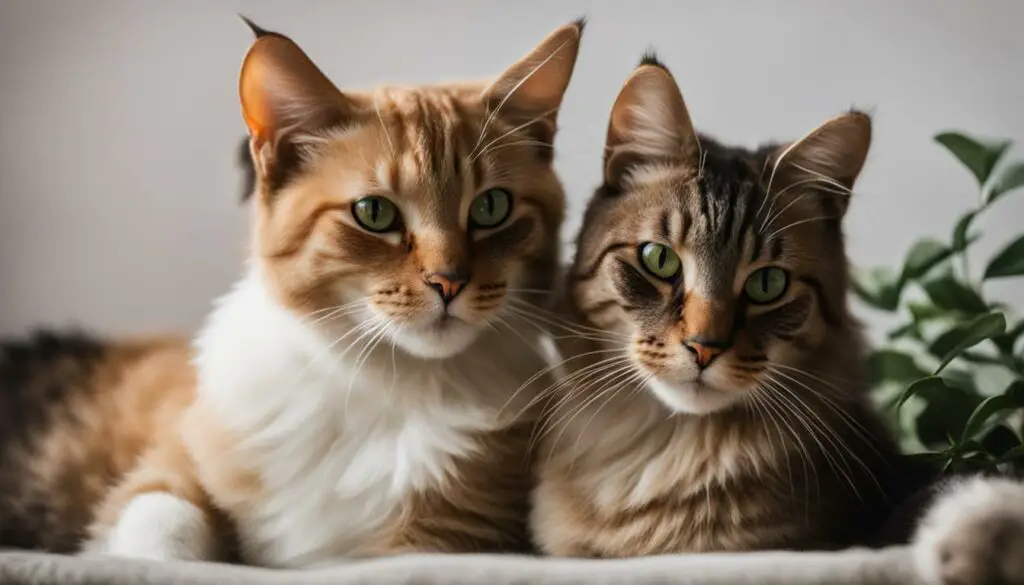If you’ve ever wondered why your cat won’t let you pet him, you’re not alone. Understanding cat behavior and body language can help shed some light on this common issue. Cats are unique creatures with their own emotions and moods, and their behavior may vary from day to day. It’s important to remember that cats are independent and may not always be in the mood for social interaction.
There could be various reasons why your cat is not responding to your attempts to pet him. Older cats, for example, may have hearing or vision problems, making it difficult for them to notice your presence. Furthermore, cats may ignore you if they perceive you as a threat or if they are not feeling well. It’s essential to give your cat space and respect their boundaries when they need it.
Gaining your cat’s trust is a crucial step in building a strong bond. By understanding your cat’s behavior and addressing their specific needs, you can work towards earning their trust and fostering a deeper connection. In this article, we will explore various insights and solutions to help you better understand why your cat won’t let you pet him and how to improve your cat-owner relationship.
Key Takeaways:
- Gaining your cat’s trust is essential for a strong bond.
- Respect your cat’s boundaries and give them space when they need it.
- Cats may ignore you if they are not in the mood for social interaction or if they perceive you as a threat.
- Understanding your cat’s body language can provide insights into their mood and intentions.
- Use positive reinforcement and engage in activities your cat enjoys to build trust and strengthen your bond.
Why Do Cats Ignore You?
Cats have a reputation for being independent and aloof creatures, and sometimes they just want to do their own thing. There can be several reasons why your cat may ignore you. One common reason is simply that they are not in the mood for social interaction at the moment. Cats have their own unique moods and preferences, and they might not always be up for cuddles or playtime. It’s important to respect their boundaries and give them the space they need.
Another factor that can contribute to your cat ignoring you is their age. Older cats may have hearing or vision problems, which can make it difficult for them to perceive your attempts at interaction. If you notice that your cat is not responding to you like they used to, it’s worth considering a trip to the veterinarian to rule out any underlying health issues.
In some cases, a cat may ignore you if they perceive you as a threat. This can happen if you’ve inadvertently done something to scare or upset them. If your cat is exhibiting fearful behaviors, it’s important to approach them calmly and give them time to feel safe again. Trying to force interaction when a cat is scared can make the situation worse.
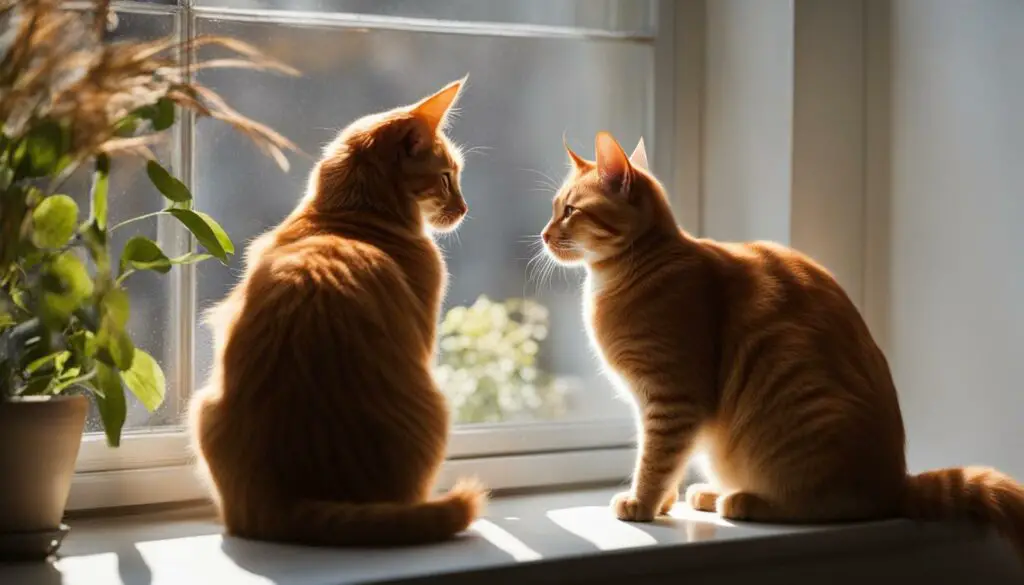
Cats can also ignore you if they are not feeling well. Just like humans, cats can have off days where they might not be up for socializing. If your cat is acting lethargic or out of sorts, it’s a good idea to monitor their behavior and contact a veterinarian if you have any concerns.
In conclusion, cats may ignore you for a variety of reasons. They are independent animals with their own unique personalities and preferences. Sometimes they just need their space, and other times there may be underlying health or behavioral issues at play. By understanding and respecting your cat’s boundaries, you can build a stronger and more fulfilling relationship with your feline friend.
Signs Your Cat Wants Alone Time
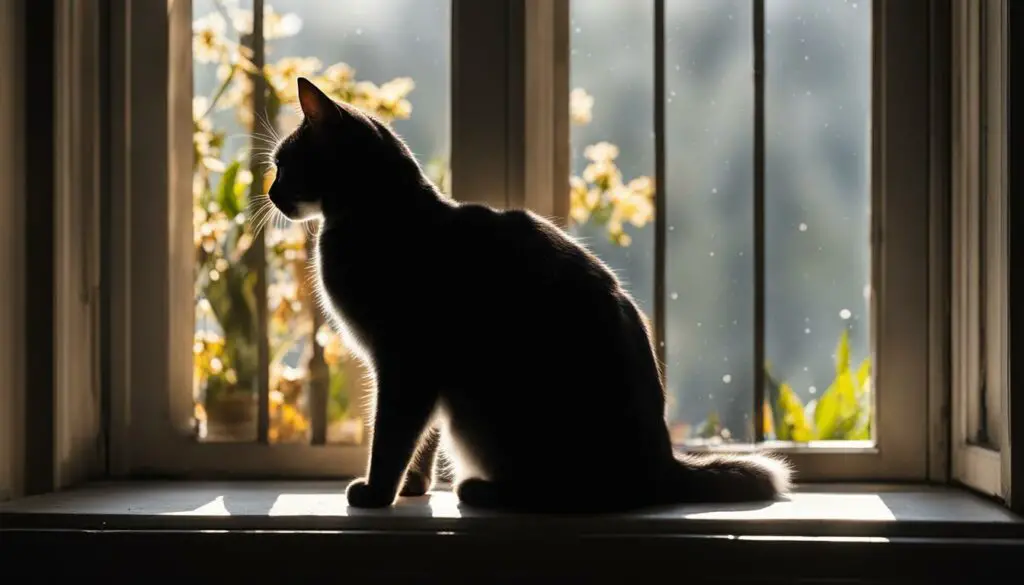
Understanding when your cat wants alone time is essential for maintaining a harmonious relationship. Just like humans, cats have different moods and preferences for social interaction. By recognizing the signs that indicate your cat’s desire for solitude, you can respect their boundaries and provide them with the space they need.
Signs of Disinterest
One of the most obvious signs that your cat wants alone time is disinterest in interacting with you. They may not respond when you call their name or try to engage with them. Cats communicate through body language, and if your cat turns away, avoids eye contact, or walks away when you approach, it’s a clear signal that they want some quiet time.
Seeking Seclusion
Cats are adept at finding secluded spots where they can retreat and relax. If your cat consistently seeks out hiding places like under the bed, in a closet, or behind furniture, it’s a strong indication that they want to be left alone. These secluded spots provide them with a sense of security and privacy, allowing them to recharge their energy undisturbed.
| Signs Your Cat Wants Alone Time | Interpretation |
|---|---|
| Ignoring attempts to interact | Disinterest in social interaction |
| Turning away or avoiding eye contact | Sign of wanting solitude |
| Seeking seclusion in hidden spots | Desire for privacy and relaxation |
| Showing signs of irritation, hissing or growling | Indicates discomfort and need for space |
It’s important to remember that cats are individuals with varying personalities, and their desire for alone time may differ from day to day. By paying attention to their behavior and respecting their cues, you can foster a trusting and balanced relationship with your feline companion.
Bonding with Your Cat: Gaining Their Trust
Bonding with your cat is an essential part of building a strong and loving relationship. Gaining their trust takes time, patience, and understanding. By following these tips, you can create a safe and secure environment for your cat, and foster a deep connection based on trust and companionship.
- Provide a safe space: Cats need a secure and comfortable space where they can relax and feel at ease. Set up a cozy bed or a designated area where your cat can retreat to when they need alone time.
- Respect their boundaries: Just like humans, cats have their own preferences and boundaries. Observe and respect their body language, and avoid forcing them into interactions they’re not comfortable with. Give them the freedom to approach you and initiate contact on their own terms.
- Use positive reinforcement: Reward your cat with treats, praise, and gentle strokes when they display desirable behaviors. This will help them associate positive experiences with your presence, and build trust over time.
- Spend quality time together: Engage in activities that your cat enjoys, such as interactive play sessions or grooming. This will not only provide mental and physical stimulation but also strengthen the bond between you and your cat.
Remember, building trust and bonding with your cat is a gradual process. It requires patience, consistency, and respect for their individual personality. By creating a nurturing environment and showing them love and understanding, you can cultivate a deep and meaningful connection with your feline companion.
Table: Cat Socialization Tips
| Tips | |
|---|---|
| 1 | Introduce new experiences gradually, allowing your cat to adjust at their own pace. |
| 2 | Expose your cat to different people, including friends and family, to help them become comfortable with different individuals. |
| 3 | Provide plenty of positive reinforcement, such as treats and affection, when your cat displays social and friendly behavior. |
| 4 | Use interactive toys and playtime to engage your cat in social interactions and strengthen the bond between you. |
| 5 | Be patient and understanding, allowing your cat to set the pace for socialization and gradually become more comfortable in social situations. |
Remember, every cat is unique, and the time it takes to bond and gain their trust may vary. Be attentive to their needs, provide a loving and secure environment, and you will be rewarded with a strong and lasting bond with your furry friend.
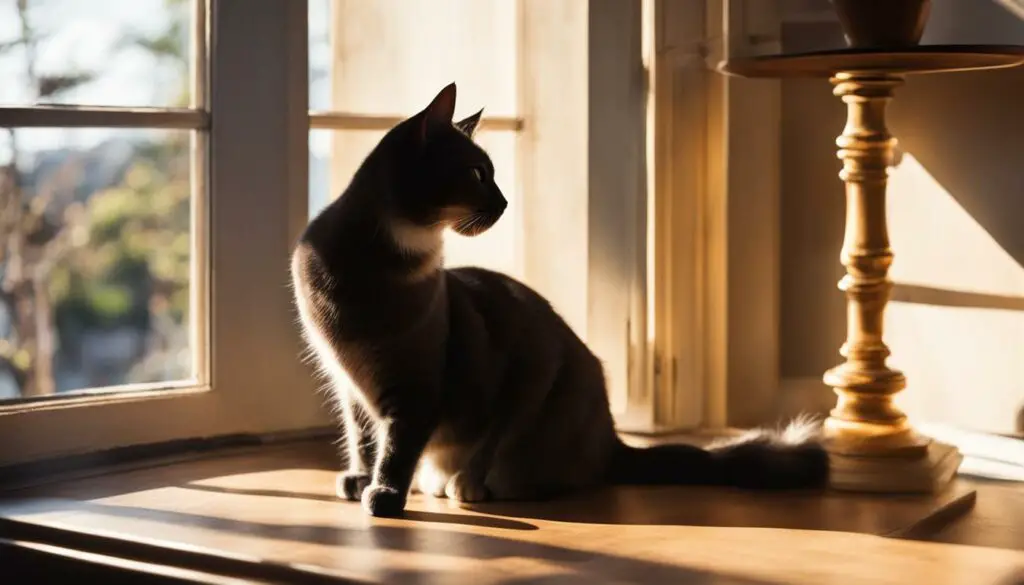
Recognizing Stress or Fear in Your Cat
Understanding your cat’s emotions is essential for providing them with proper care and addressing any potential stress or fear they may be experiencing. Cats have a unique way of expressing their emotions through their behavior and body language. By recognizing the signs, you can take steps to alleviate their stress and create a more positive environment for them.
Signs of Stress or Fear
When your cat is stressed or fearful, they may exhibit certain behaviors that can serve as indicators. These signs can include:
- Hiding or seeking seclusion
- Excessive grooming or licking
- Aggression or hissing
- Changes in appetite
- Urinating outside the litter box
It’s important to pay attention to these behaviors, as they can be a cry for help or an indication that your cat is feeling overwhelmed. By recognizing these signs, you can take appropriate action to help your cat feel more comfortable and secure.
Creating a Calm and Safe Environment
To reduce your cat’s stress and fear, it’s important to provide them with a calm and safe environment. This can be achieved by:
- Creating designated hiding spots or safe zones where your cat can retreat to when they feel overwhelmed
- Ensuring your cat has access to a quiet and peaceful area where they can relax
- Using pheromone sprays or diffusers to create a soothing atmosphere
Creating a positive environment can go a long way in helping your cat feel more secure and less stressed.
Seeking Veterinary Advice
If you notice persistent signs of stress or fear in your cat, it’s important to seek veterinary advice. A veterinarian can assess your cat’s overall health and behavior and provide guidance on how to address their specific needs. They may recommend behavioral modifications, medications, or other interventions to help alleviate your cat’s stress and improve their overall well-being.
By recognizing stress or fear in your cat and taking appropriate action, you can create a nurturing and supportive environment that promotes their overall happiness and health.
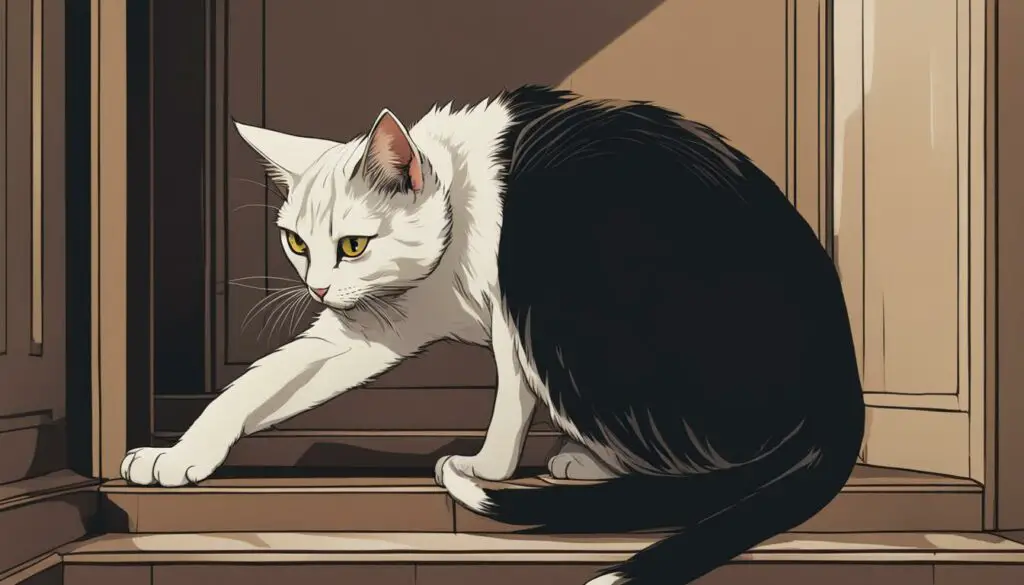
Understanding Cat Body Language
Understanding cat body language is essential for any cat owner. Cats communicate through their body posture, facial expressions, and tail movements. By paying attention to these cues, you can better understand your cat’s emotions and needs.
Here are some key cat body language signals to look out for:
- Ear position: When a cat’s ears are relaxed and facing forward, it usually indicates that they are calm and content. If the ears are flattened or pointing backward, it may mean they are feeling agitated or fearful.
- Eye contact: Direct eye contact from a cat can be a sign of trust and affection. However, prolonged staring or dilated pupils can indicate aggression or fear.
- Tail position: A cat’s tail can convey a range of emotions. A relaxed, gently swaying tail suggests contentment, while a puffed-up or twitching tail may indicate agitation or aggression.
- Body posture: A cat with a relaxed posture, with their body low to the ground and their tail up, is typically feeling confident and comfortable. On the other hand, a tense or crouched body posture may mean they are anxious or scared.
It’s important to note that every cat is unique, and their body language may vary slightly. Observe your cat’s behavior over time to develop a better understanding of their individual cues and preferences.
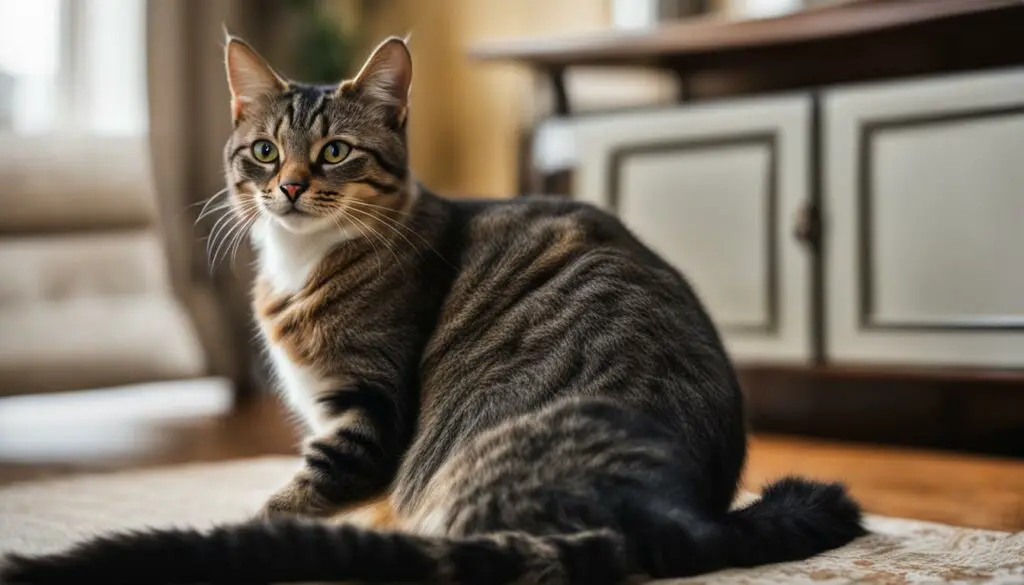
The Significance of Posture in Cat Behavior
Understanding your cat’s body language is key to deciphering their mood and communication. One of the primary indicators of a cat’s emotional state is their posture. By observing their body positioning, you can gain valuable insights into how they are feeling and respond appropriately.
A cat with an open and relaxed posture typically indicates a confident and content feline. They may have their body stretched out, tail held high, and ears forward. This posture shows that they feel secure in their environment and are comfortable with their surroundings.
On the other hand, a crouched or tense posture may indicate fear or anxiety. A cat in this position may have their body lowered to the ground, tail tucked between their legs, and ears flattened against their head. These signs suggest that the cat is feeling threatened or uneasy and may need some space and reassurance.
The Importance of Recognizing Posture Cues
Understanding your cat’s body language is crucial for building a strong bond and creating a harmonious environment. By recognizing their posture cues, you can respond appropriately to their needs and ensure their well-being.
In addition to understanding your cat’s posture, it’s important to consider the context in which they display specific positions. For example, a cat with a raised tail may not always be confident. In some cases, it can be a sign of aggression or excitement. By taking into account other behavioral cues, such as facial expressions and vocalizations, you can gain a more accurate understanding of your cat’s emotions.
| Posture | Meaning |
|---|---|
| Relaxed and open | Confidence and contentment |
| Crouched or tense | Fear or anxiety |
| Arched back and raised fur | Aggression or fear |
By paying attention to your cat’s posture and combining it with other behavioral cues, you can better understand their emotional state and provide them with the care and support they need. Respecting their boundaries and responding to their signals will help foster a stronger bond and enhance your relationship with your feline companion.
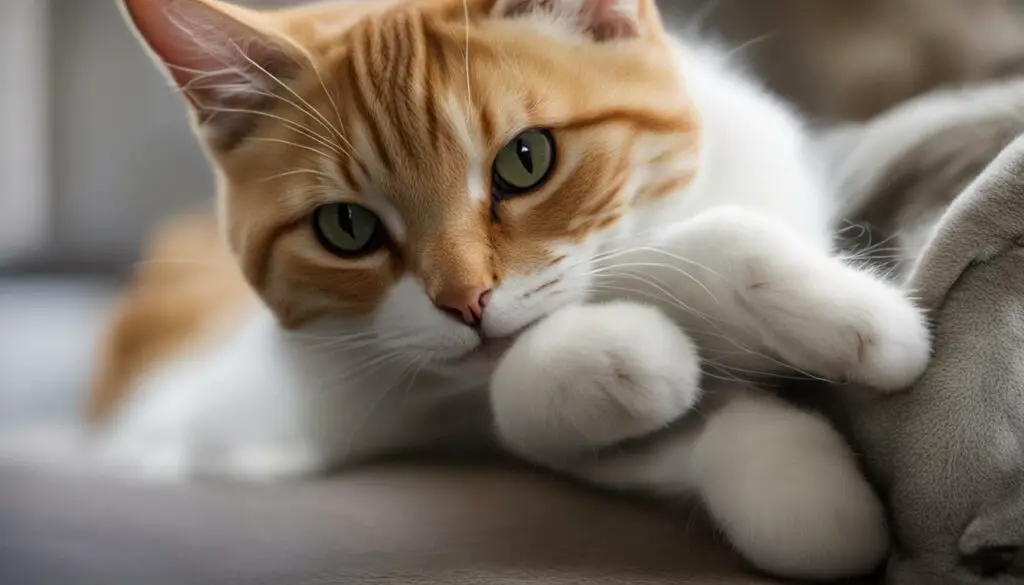
Decoding Tail Movement in Cats
Understanding a cat’s body language is essential for cat owners to interpret their mood, intentions, and needs accurately. The tail is one of the most expressive parts of a cat’s body, and decoding its movement can provide valuable insights into their behavior and emotions.
Tail Position: A cat’s tail position can indicate their level of comfort and confidence. A high, vertical tail usually suggests a content and confident cat, while a low or tucked tail may signal fear, anxiety, or submission.
Tail Movement: The movement of a cat’s tail can also reveal their emotional state. A relaxed, slow wag or gentle swishing typically indicates a calm and content cat. On the other hand, rapid, aggressive wagging or lashing of the tail can signify agitation, irritation, or aggression. Quivering or twitching of the tail can be a sign of excitement or anticipation.
Context is Key: It’s important to consider the entire context when interpreting a cat’s tail movements. Look at their overall body language, facial expressions, and the situation they are in to get a complete understanding of their mood. For example, a cat with a high, puffed tail may be displaying fear or aggression rather than confidence if their ears are back and their body is tense.
| Tail Position | Meaning |
|---|---|
| High, vertical tail | Confident and content |
| Low or tucked tail | Fear, anxiety, or submission |
| Relaxed, slow wag or gentle swishing | Calm and content |
| Rapid, aggressive wagging or lashing | Agitation, irritation, or aggression |
| Quivering or twitching | Excitement or anticipation |
By observing and understanding a cat’s tail movements, cat owners can gain valuable insights into their cat’s behavior, mood, and overall well-being. It allows for better communication and a stronger bond between cat and owner.
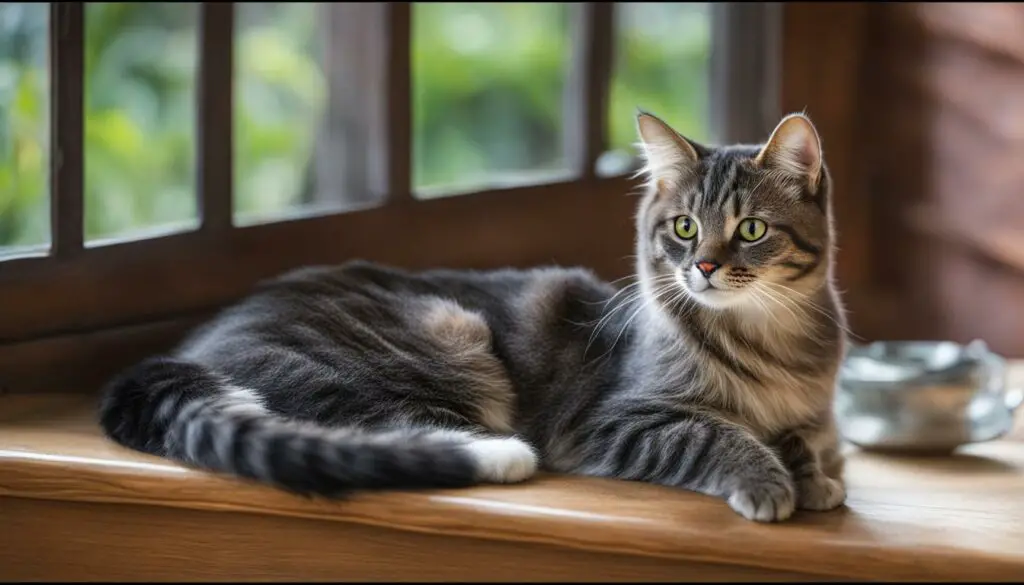
The Meaning Behind Cat Staring
When it comes to understanding our feline companions, their behavior and body language can provide valuable insights. One behavior that often leaves cat owners puzzled is staring. Cats have a unique way of communicating through their gaze, and their staring can have different meanings depending on the context.
When a cat stares at you, it can be a sign of respect and trust. They may be indicating their comfort in your presence and showing that they feel safe with you. Cats are also naturally curious creatures, so they may stare at you to observe your actions and emotions. It’s their way of trying to understand you and the environment around them. However, it’s important to consider your cat’s overall body language and context to accurately interpret their intentions.
On the other hand, staring can also be a sign of anger or fear. If a cat feels threatened or frightened, they may fixate their gaze on a person or object as a defensive response. In this case, their body language may accompany the stare, with dilated pupils, flattened ears, and a tense posture. It’s crucial to be mindful of these signs and give your cat space and time to feel secure.
Table: Decoding Cat Staring
| Behavior | Meaning |
|---|---|
| Staring with relaxed body language and slow blinking | Sign of trust and contentment |
| Staring with dilated pupils, flattened ears, and tense posture | Sign of fear or aggression |
| Curious and observant stare | Sign of interest and exploration |
When your cat stares at you, take a moment to observe their overall demeanor and body language. Are they relaxed and displaying other signs of contentment, or do they appear tense and defensive? By paying attention to these subtle cues, you can gain a better understanding of your cat’s emotions and respond accordingly to ensure their well-being.
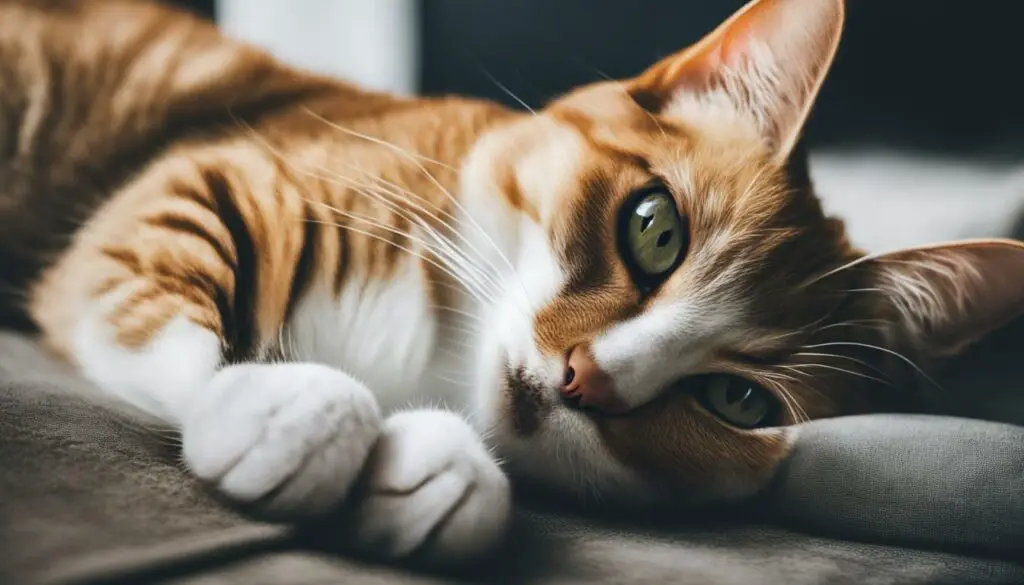
The Language of Cat Meows
Cats are known for their vocalizations, and meowing is one of the primary ways they communicate with humans. Each cat has its unique meow, and understanding the language of cat meows can help you better interpret your feline friend’s needs and emotions.
“Meow” variations: Cats have different types of meows that serve various purposes. A short, high-pitched meow often indicates a greeting or a request for attention. It’s their way of saying, “Hello, I’m here!” On the other hand, a long, low-pitched meow can signal frustration, discomfort, or even pain. If your cat suddenly starts meowing differently, it’s essential to observe other behavior and assess their overall well-being.
Frequency and intensity: Pay attention to the frequency and intensity of your cat’s meows. Excessive meowing can indicate stress, boredom, or loneliness. It’s crucial to provide mental and physical stimulation to prevent excessive vocalization. If your cat’s meowing becomes excessive and their behavior changes, it may be a good idea to consult a veterinarian for further evaluation.
Context and body language: It’s essential to consider the context and your cat’s body language when interpreting their meows. For example, if your cat meows while standing near their food bowl, it could be a sign of hunger. If they meow while staring out the window, they may be expressing their desire to go outside. Understanding the overall situation and combining it with your cat’s meowing can give you a better understanding of their needs and desires.
| Meow Type | Meaning |
|---|---|
| Short, high-pitched meow | Greeting, request for attention |
| Long, low-pitched meow | Frustration, discomfort, or pain |
| Excessive meowing | Stress, boredom, or loneliness |
| Variations in meowing | Changes in behavior may indicate underlying issues |
“Meow” variations: Cats have different types of meows that serve various purposes. A short, high-pitched meow often indicates a greeting or a request for attention. It’s their way of saying, “Hello, I’m here!” On the other hand, a long, low-pitched meow can signal frustration, discomfort, or even pain. If your cat suddenly starts meowing differently, it’s essential to observe other behavior and assess their overall well-being.
In conclusion, meowing is an integral part of cat communication, and understanding the language of cat meows can enhance your relationship with your feline companion. By paying attention to meow variations, frequency, intensity, context, and body language, you can decipher your cat’s messages and meet their needs more effectively.
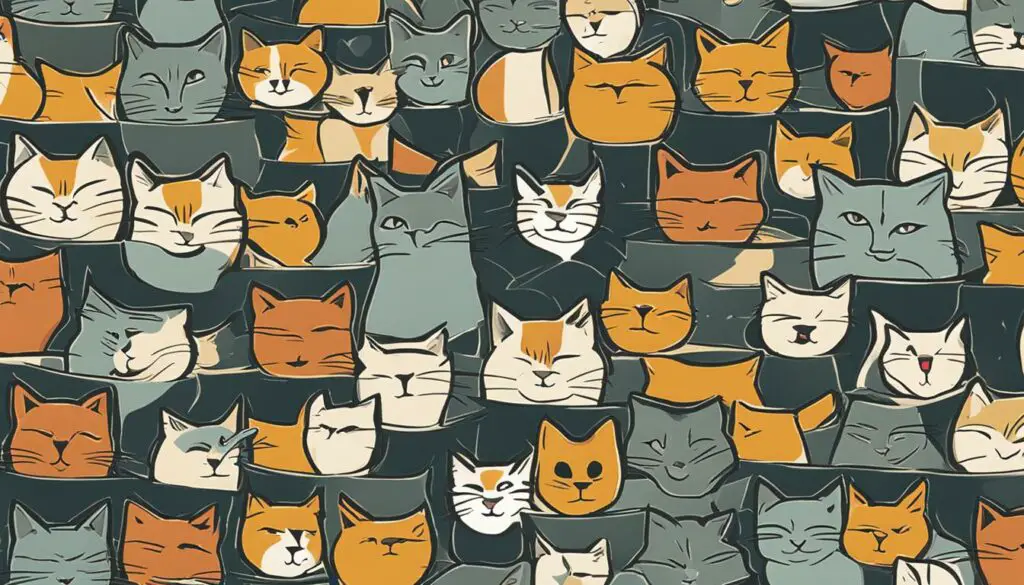
The Mystery of Cat Sneezing
Cat sneezing can be a common occurrence, but it can also be a sign of an underlying issue. While occasional sneezing is usually nothing to worry about, frequent or persistent sneezing may indicate a respiratory infection or other health problem. It’s important to monitor your cat’s sneezing patterns and look for any accompanying symptoms to determine the cause and seek appropriate veterinary care.
Respiratory infections, such as feline upper respiratory infection (URI) or feline herpesvirus, are common culprits of cat sneezing. These infections can cause cold-like symptoms, including sneezing, nasal discharge, coughing, and even fever. If your cat’s sneezing is accompanied by these symptoms, it’s crucial to consult a veterinarian for diagnosis and treatment.
Additionally, allergies can also cause cat sneezing. Common allergens include dust, pollen, mold, and certain types of litter or cleaning products. If you notice that your cat sneezes more frequently in certain environments or after exposure to specific triggers, it’s worth considering potential allergens and making necessary changes to reduce exposure.
It’s essential to note that sneezing alone doesn’t always indicate a serious health issue. Cats may sneeze occasionally due to irritants in their environment, such as dust or smoke. However, if your cat’s sneezing is excessive, accompanied by other symptoms, or appears to be causing discomfort, it’s best to consult a veterinarian for a thorough examination and appropriate treatment.
| Possible Causes of Cat Sneezing | Symptoms to Look For |
|---|---|
| Respiratory infections (URI, feline herpesvirus) | Frequent sneezing, nasal discharge, coughing, fever |
| Allergies | Sneezing triggered by specific allergens, such as dust, pollen, or certain litter types |
| Irritants in the environment | Occasional sneezing, usually without other symptoms |
The Comfort of Sleeping with Your Cat
Sleeping with your cat can be a delightful and comforting experience for both of you. It not only provides a sense of warmth and security but also strengthens the bond between you and your feline friend. Cats often choose to sleep with their owners as a display of trust and affection. It’s their way of seeking companionship and showing that they feel safe in your presence.
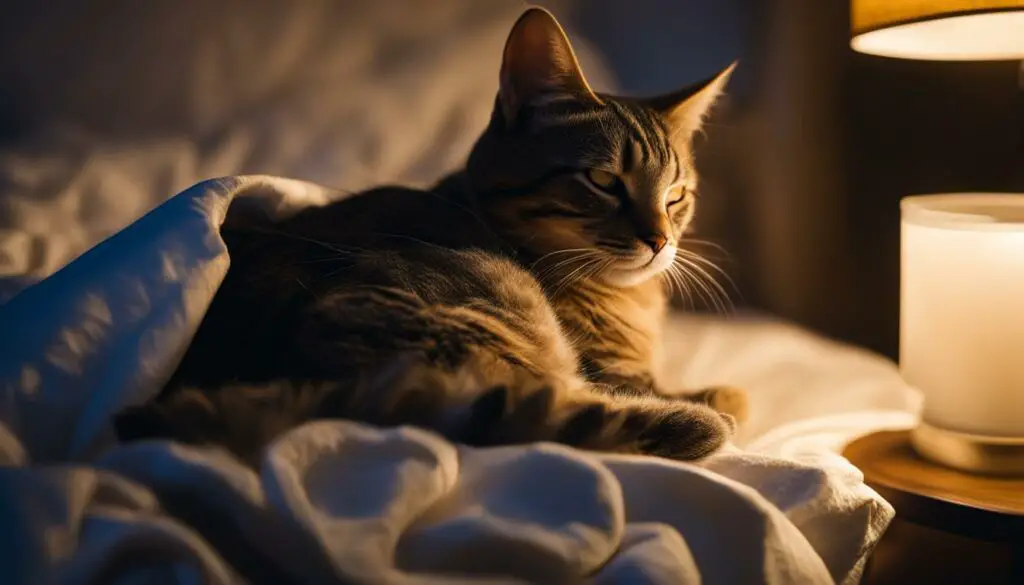
Sharing a bed with your cat can create a deep sense of emotional connection. The gentle purring and rhythmic breathing of your cat can have a soothing effect, promoting relaxation and reducing stress. Additionally, sleeping with your cat can help alleviate loneliness and provide a sense of comfort, especially during times of anxiety or sadness.
It’s important to ensure that both you and your cat are comfortable during sleep. Provide a designated sleeping area in your bed or a separate sleeping spot nearby. Consider using soft bedding and pillows to create a cozy environment. It’s also essential to respect your cat’s boundaries and allow them to choose where and how they want to sleep.
Benefits of Sleeping with Your Cat:
- Enhanced Bonding: Sleeping together strengthens the emotional connection between you and your cat, reinforcing the bond of trust and affection.
- Reduced Stress: The presence of your cat can have a calming effect, promoting relaxation, and reducing anxiety.
- Increased Comfort: Sharing a bed with your cat can provide a sense of warmth and physical comfort, enhancing the quality of your sleep.
- Alleviated Loneliness: Sleeping with your cat can help reduce feelings of loneliness, providing companionship and emotional support.
However, it’s important to note that sleeping with your cat may not be suitable for everyone. Some people may have allergies or may find it difficult to sleep with a pet. If this is the case, you can still create a close bond with your cat by providing them with a comfortable sleeping area nearby.
Overall, sleeping with your cat can be a wonderful way to strengthen your connection and enjoy the unconditional love and companionship that cats offer. Just make sure to create a safe and comfortable sleeping environment for both you and your feline companion.
Understanding Why Your Cat Follows You Everywhere
Cats can be incredibly attentive and affectionate creatures, and it’s not uncommon for them to follow their owners everywhere they go. This behavior is often a sign of their strong bond with you and their desire for your companionship. So why does your cat follow you around? Let’s explore some of the reasons behind this adorable and attention-seeking behavior.
Cat Bonding: Cats are known for forming deep bonds with their owners. When a cat follows you everywhere, it’s their way of expressing their love and attachment to you. Cats are social animals, and they see you as a part of their family. They enjoy being near you, observing your actions, and seeking your attention. Your presence provides them with comfort and security, which is why they choose to stick by your side.
Curiosity and Exploration: Cats are naturally curious creatures. They have a strong instinct to explore their environment and investigate new things. When your cat follows you, they may be motivated by their curiosity to see where you’re going and what you’re doing. They see you as a source of interesting sights, sounds, and smells, and they want to be a part of your activities. It’s their way of satisfying their inquisitive nature and being involved in your world.
Attention-Seeking: Cats crave attention and interaction from their owners. When your cat follows you everywhere, it may be their way of seeking your attention and affection. They may rub against your legs, meow, or paw at you to get your attention. By following you around, they’re hoping to engage with you, play with you, or simply enjoy your presence. It’s important to give them the attention they seek and engage in interactive playtime or cuddle sessions to fulfill their social needs.
| Reasons Cats Follow Their Owners | Description |
|---|---|
| Cat Bonding | Cats follow their owners to express love and attachment, seeing them as part of their family. |
| Curiosity and Exploration | Cats are naturally curious and want to be involved in their owners’ activities and environments. |
| Attention-Seeking | Cats follow their owners to seek attention, interaction, and affection. |

In conclusion, when your cat follows you everywhere, it’s a sign of their deep bond, curiosity, and desire for attention. Embrace their affectionate behavior and spend quality time with them to strengthen the bond between you. Remember to provide them with a stimulating environment, interactive playtime, and plenty of love and affection. By understanding your cat’s behavior, you can cultivate a loving and fulfilling relationship with your furry companion.
The Secret Behind Cat Drool
When it comes to our feline friends, there are many behaviors that can leave us wondering about their intentions. One such behavior is the act of drooling. While it may seem strange to us, cat drooling is actually quite common and can have various meanings.
First and foremost, cat drooling can be a sign of contentment. Cats may become so relaxed and comfortable in our presence that they begin to drool as a natural response. This typically occurs during moments of relaxation, such as when they are being petted or receiving affection.
It’s important to note that excessive drooling could be a cause for concern. If your cat is drooling excessively or if their drool appears different in texture or color, it may be a sign of dental issues, infections, or stress. In such cases, it is recommended to consult with a veterinarian to address any potential health concerns.
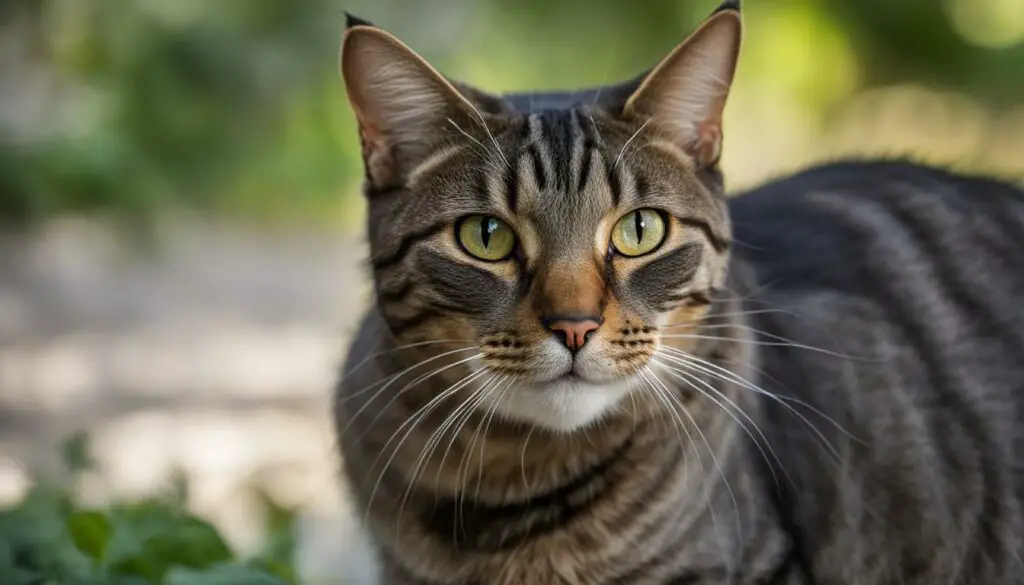
Table: Common Reasons for Cat Drooling
| Reason | Description |
|---|---|
| Contentment | Cats may drool when they are relaxed and feeling comfortable. |
| Dental Issues | Excessive drooling or abnormal drool may indicate dental problems. |
| Infections | Drooling can be a symptom of oral infections or other health issues. |
| Stress | Some cats may drool in stressful situations as a response to anxiety. |
In conclusion, cat drooling can be a normal behavior indicating contentment and relaxation. However, if you notice any excessive or abnormal drooling, it is important to consult with a veterinarian to ensure your cat’s health and well-being.
The Affectionate Behavior of Biscuit-Making
One of the most endearing behaviors that cats display is kneading, also known as biscuit-making. This behavior involves rhythmically pushing their paws in and out against a soft surface, such as a blanket or your lap. While it may seem like a simple action, kneading is actually a meaningful behavior with various implications for your cat’s behavior and the bond you share.
Kneading is often associated with feelings of comfort and contentment in cats. It is believed to hark back to their kittenhood, when they would knead their mother’s belly to stimulate milk production. As adult cats, kneading can be a sign of relaxation and happiness, indicating that they feel safe and secure in your presence. It’s a way for them to express their trust and affection.
During kneading, your cat may also purr, a behavior associated with contentment and relaxation. It’s their way of communicating their happiness and satisfaction. Some cats may even dribble or drool during kneading, which further showcases their blissful state.
To enhance the bonding experience with your cat, you can gently stroke and pet them while they knead. This reinforces the positive association with the behavior and allows you to interact with them in a mutually enjoyable way. Providing a soft and comfortable surface for them to knead on, such as a blanket or a plush cushion, can also encourage the behavior.
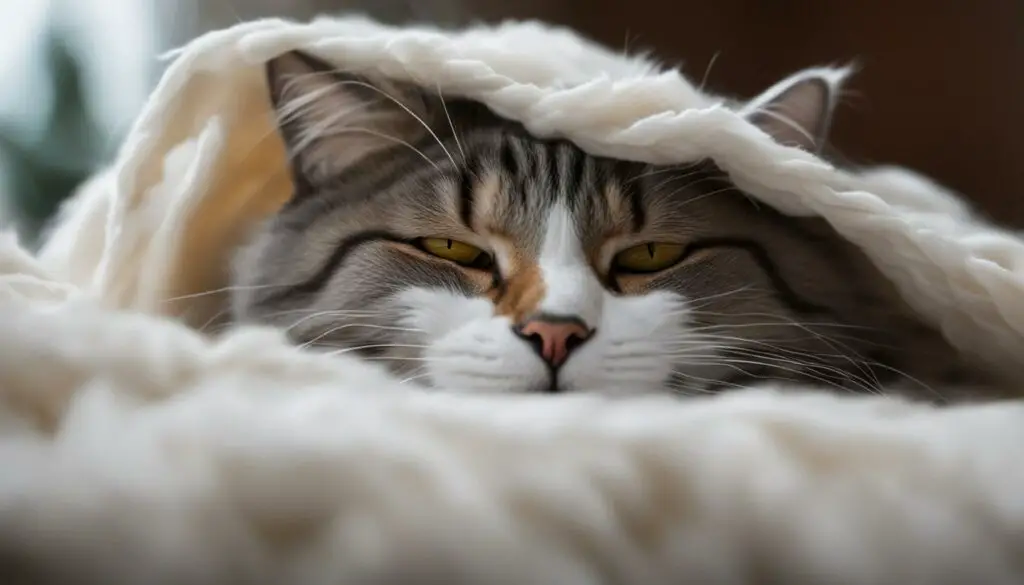
The Benefits of Kneading
Kneading not only serves as a form of communication and bonding between you and your cat, but it also offers some practical benefits for them. The rhythmic motion of kneading can help cats relax and release tension in their muscles. It’s a natural way for them to stretch and exercise their paws, promoting healthy circulation.
Additionally, kneading can serve as a self-soothing behavior for cats, especially when they are feeling anxious or stressed. The repetitive motion and the release of endorphins during kneading can have a calming effect on their nervous system. So, if you notice your cat kneading more frequently during certain situations, such as when they are in a new environment or around unfamiliar people, it could be their way of coping with stress.
Overall, the affectionate behavior of biscuit-making, or kneading, is a beautiful expression of your cat’s trust, contentment, and desire for connection. Embrace this behavior and use it as an opportunity to strengthen your bond and provide your feline companion with comfort and security.
Conclusion
In conclusion, understanding your cat’s behavior is essential for improving your cat-owner relationship and creating a strong bond. By observing their body language, interpreting their vocalizations, and paying attention to their actions, you can gain valuable insights into their needs and preferences.
Building trust and bonding with your cat takes time and patience. Providing a safe and comfortable environment, respecting their boundaries, and using positive reinforcement are key strategies in developing a strong connection with your feline friend.
Remember, cats are independent creatures with their own emotions and moods. It’s important to respect their individuality and give them the space they need. By fostering a loving and understanding relationship, you can create a harmonious and fulfilling life together with your beloved cat.
FAQ
Why do cats ignore you?
Cats may ignore you if they are not in the mood for social interaction, have hearing or vision problems, perceive you as a threat, or if they are not feeling well.
How can I tell if my cat wants alone time?
Signs that your cat wants alone time include not responding to your attempts to interact, seeking out a secluded spot, or showing signs of irritation like hissing or growling.
How can I bond with my cat and gain their trust?
To bond with your cat and gain their trust, provide a safe and comfortable environment, give them space, use positive reinforcement, engage in activities they enjoy, and introduce new experiences and people gradually.
How can I recognize stress or fear in my cat?
Signs of stress or fear in cats may include hiding, excessive grooming, aggression, urinating outside the litter box, or changes in appetite.
How can I understand my cat’s body language?
Pay attention to your cat’s posture, tail position, ear position, and facial expressions to understand their mood and intentions.
What does my cat’s posture indicate?
An open and relaxed posture often signifies a confident and content cat, while a crouched or tense posture may indicate fear or anxiety.
What can tail movement tell me about my cat?
Tail movement can indicate your cat’s emotional state, such as excitement or agitation. A high, vertical tail generally indicates a confident and comfortable cat, while a low tail may indicate fear or anxiety.
What does it mean when my cat stares at me?
When a cat stares at you, it can mean they trust and respect you, or they may be curious about your actions and emotions. However, staring can also be a sign of anger or fear, so consider your cat’s overall body language and context to understand their intentions.
How do cats communicate through meows?
Cats use meows to communicate their wants and needs, such as greeting, seeking attention, or expressing hunger. Pay attention to the tone and frequency of your cat’s meows to understand their messages.
Why does my cat sneeze frequently?
Cat sneezing can be caused by dust or smoke irritation, but it can also indicate an upper respiratory infection or allergies. If your cat sneezes frequently or exhibits other signs of illness, consult a veterinarian.
Is it okay to sleep with my cat?
Sleeping with your cat can be a comforting experience for both of you. Cats often choose to sleep with their owners as a sign of trust and affection. Ensure a safe and comfortable sleeping environment for both of you.
Why does my cat follow me everywhere?
Cats may follow their owners everywhere as a sign of companionship and attachment. They enjoy spending time with you and may seek attention or food.
What does it mean when my cat drools?
Cat drool can be a sign of happiness and contentment. However, excessive drooling can indicate dental issues, infections, or stress. Monitor your cat’s drooling patterns and seek veterinary advice if necessary.
Why does my cat knead me?
Kneading, also known as biscuit-making, is an affectionate behavior that cats engage in. It’s a sign of comfort, trust, and bonding. Cats may knead their owners as a way to express their love and create a sense of security.

